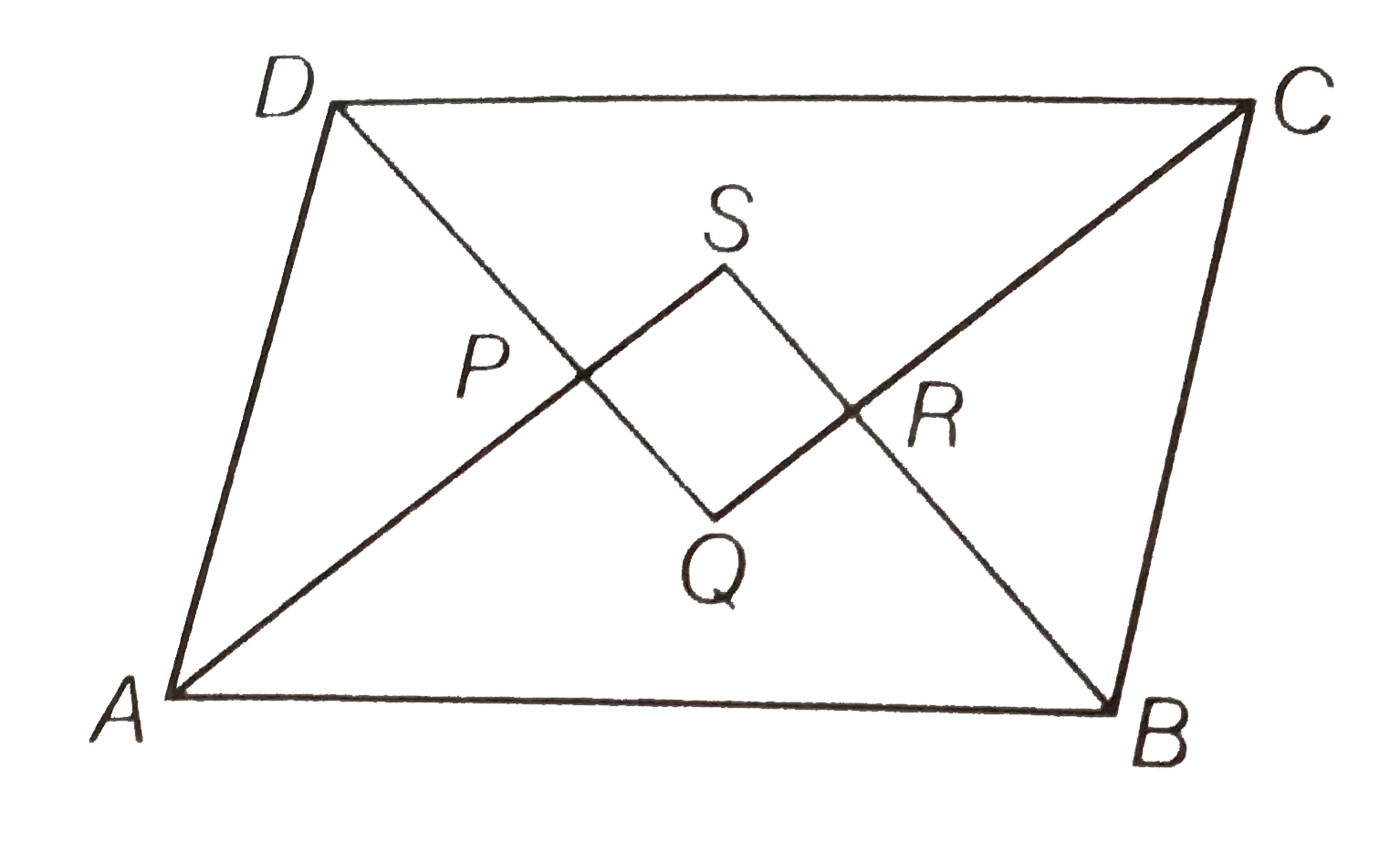The midpoint of two opposite sides of a quadrilateral and the midpoint of the diagonals are the vertices of a parallelogram. Prove that using vectors.
To prove that the midpoints of two opposite sides of a quadrilateral and the midpoints of the diagonals form a parallelogram using vectors, we can follow these steps:
1. Define the Quadrilateral and Points:
Let the vertices of the quadrilateral be A,B,C,D with position vectors:
- →A=→a
- →B=→b
- →C=→c
- →D=→d
2. Find the Midpoints:
- Let P be the midpoint of side BC:
→P=→b+→c2
- Let R be the midpoint of side AD:
→R=→a+→d2
- Let Q be the midpoint of diagonal AC:
→Q=→a+→c2
- Let S be the midpoint of diagonal BD:
→S=→b+→d2
3. Calculate Vectors PQ and SR:
- To find the vector →PQ:
→PQ=→Q−→P=(→a+→c2)−(→b+→c2)
Simplifying this gives:
→PQ=→a+→c−→b−→c2=→a−→b2
- To find the vector →SR:
→SR=→R−→S=(→a+→d2)−(→b+→d2)
Simplifying this gives:
→SR=→a+→d−→b−→d2=→a−→b2
4. Show that PQ is Parallel to SR:
From the calculations, we have:
→PQ=→a−→b2and→SR=→a−→b2
This shows that →PQ=→SR, meaning PQ is parallel to SR and they are of equal length.
5. Conclusion:
Since PQ is parallel to SR and they are equal in length, we can conclude that quadrilateral PQRS is a parallelogram by definition.
Let the vertices of the quadrilateral be A,B,C,D with position vectors:
- →A=→a
- →B=→b
- →C=→c
- →D=→d
- Let P be the midpoint of side BC:
→P=→b+→c2
- Let R be the midpoint of side AD:
→R=→a+→d2
- Let Q be the midpoint of diagonal AC:
→Q=→a+→c2
- Let S be the midpoint of diagonal BD:
→S=→b+→d2
- To find the vector →PQ:
→PQ=→Q−→P=(→a+→c2)−(→b+→c2)
Simplifying this gives:
→PQ=→a+→c−→b−→c2=→a−→b2
→SR=→R−→S=(→a+→d2)−(→b+→d2)
Simplifying this gives:
→SR=→a+→d−→b−→d2=→a−→b2
From the calculations, we have:
→PQ=→a−→b2and→SR=→a−→b2
This shows that →PQ=→SR, meaning PQ is parallel to SR and they are of equal length.
Since PQ is parallel to SR and they are equal in length, we can conclude that quadrilateral PQRS is a parallelogram by definition.
Topper's Solved these Questions
- TRIGONOMETRIC RATIOS FOR COMPOUND, MULTIPLE, SUB-MULTIPLE ANGLES, AND TRANSFORMATION FORMULAS BOOK - CENGAGE ENGLISHCHAPTER - TRIGONOMETRIC RATIOS FOR COMPOUND, MULTIPLE, SUB-MULTIPLE ANGLES, AND TRANSFORMATION FORMULAS EXERCISE - Multiple Correct Answers Type
6 Videos
- VECTORS TRIPLE PRODUCTS, RECIPROCAL SYSTEM OF VECTORSBOOK - CENGAGE ENGLISHCHAPTER - VECTORS TRIPLE PRODUCTS, RECIPROCAL SYSTEM OF VECTORSEXERCISE - DPP 2.4
20 Videos
Similar Questions
Prove that the lines joining the middle points of the opposite sides of a quadrilateral and the join of the middle points of its diagonals meet in a point and bisect one another
View SolutionIf two opposite sides of a cyclic quadrilateral are equal, then the other two sides are parallel.
View Solution
Knowledge Check
Connecting the midpoints of opposite sides of any quadrilateral to the midpoints of the adjacent sides must always create which of the following ?
APointBLineCCircleDParallelogram
If the diagonals of a quadrilateral bisect each other, then the quadrilateral is a parallelogram.
View SolutionShow that the opposite sides of a parallelogram are equal.
View SolutionIf the two sides of a pair of opposite sides of a cyclic quadrilateral are equal, prove that its diagonals are equal.
View SolutionIf the two sides of a pair of opposite sides of a cyclic quadrilateral are equal, prove that its diagonals are equal.
View SolutionIf the two sides of a pair of opposite sides of a cyclic quadrilateral are equal, prove that its diagonals are equal.
View SolutionIf diagonals of a cyclic quadrilateral are diameters of the circle through the vertices of the quadrilateral, prove that it is a rectangle.
View SolutionProve that the quadrilateral formed by the bisectors of the angles of a parallelogram is a rectangle.

View Solution